Deltiology, the collecting of postcards, is the third largest hobby in the world. Real photo post cards were popular at the turn of the 20th Century. Dating these post cards is made easier by information printed on the reverse of the cards. Sometimes, however, the job is made far easier when a card has been postally used and has a readable postmark, like this card that was mailed in 1911.

Although photographic postcards could be generated from a variety of photographic processes, Eastman Kodak revolutionized the RPPC format when it began selling Velox photo paper with a pre-printed postcard back in 1902, followed by its “release of the No. 3A Folding Pocket camera, which used film specifically designed for postcard-size prints. Amateur photographers were now able to have their own images printed directly onto postcard paper and send them through the mail” (Collectors Weekly, RPPCs).This card was printed on Velox paper and dates from 1907-1914.
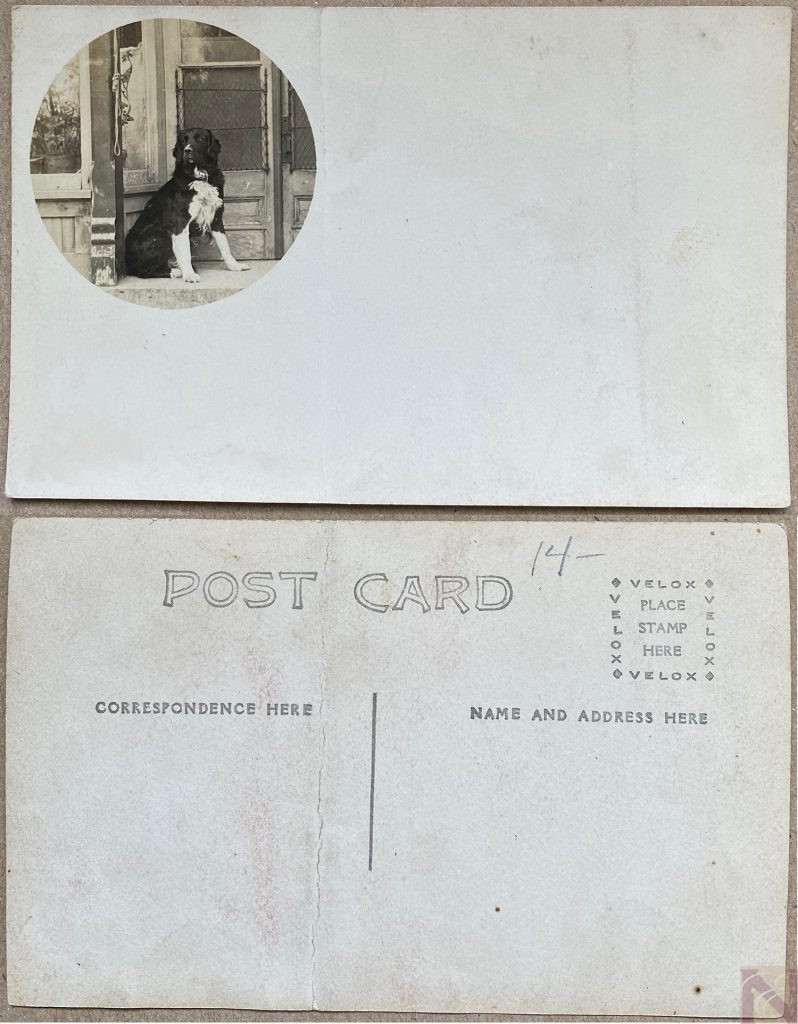
There is some confusion on what Real Photo Postcards (RPPC) are, and how to differentiate from a printed postcard. Real Photo Postcards are photographs that are reproduced by actually developing them onto photographic paper the size and weight of Postcards, with a Postcard back. There are many Postcards that reproduce photos by various printing methods that are NOT “real photos”…the same methods used when reproducing photos in magazines and newspapers. The best way to tell the difference is to look at the Postcard with a magnifying glass. If the photo is printed, you will see that it is made up of a lot of little dots, the same as a photo printed in a newspaper. A Real Photo Postcard is solid, no dots. This card has a Karbo Divider – “Real Photo Stamp Box” in place of stamp box and is from 1909.
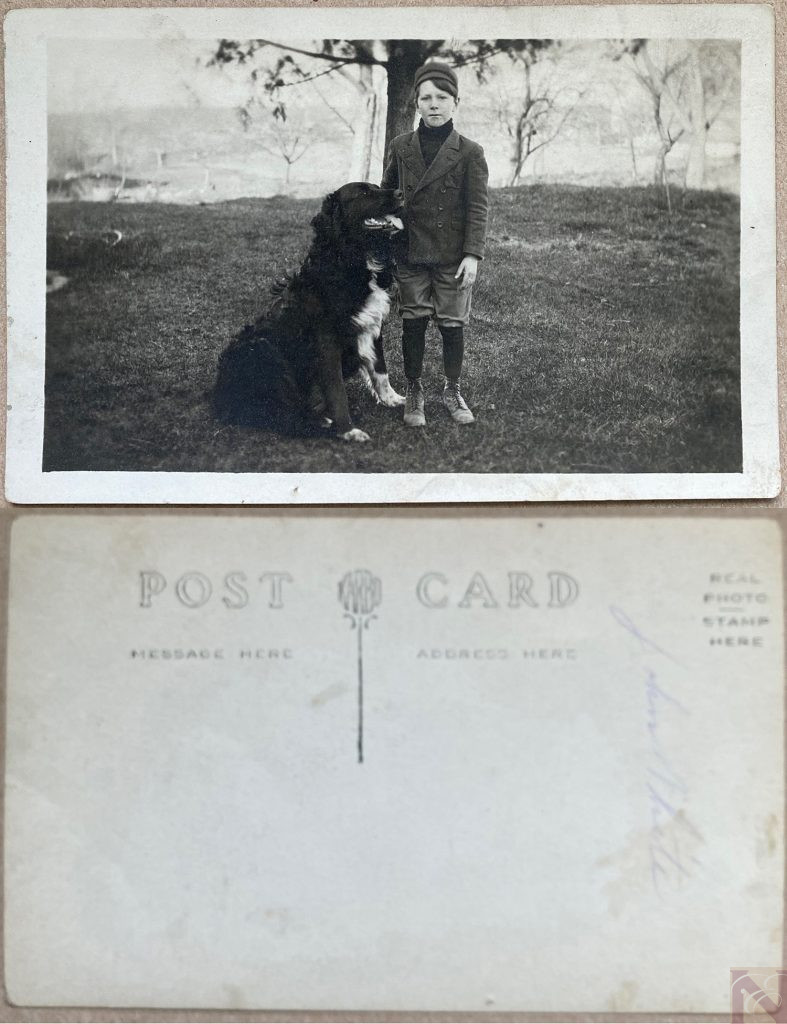
Because space on the divided back was generally pre-printed or too expensive to provide additional descriptive information about image, photographers and studio’s resorted to hand stamping or embossing RPPCs, or by “exposing [or etching] text directly onto the photograph negative” (Collectors Weekly). One can see the text etched by hand directly onto the photograph negative of this street scene. This card is printed on Solio paper which was in use from 1903-1920, but you can also see that the negative was dated November 10, 1908 prior to printing.
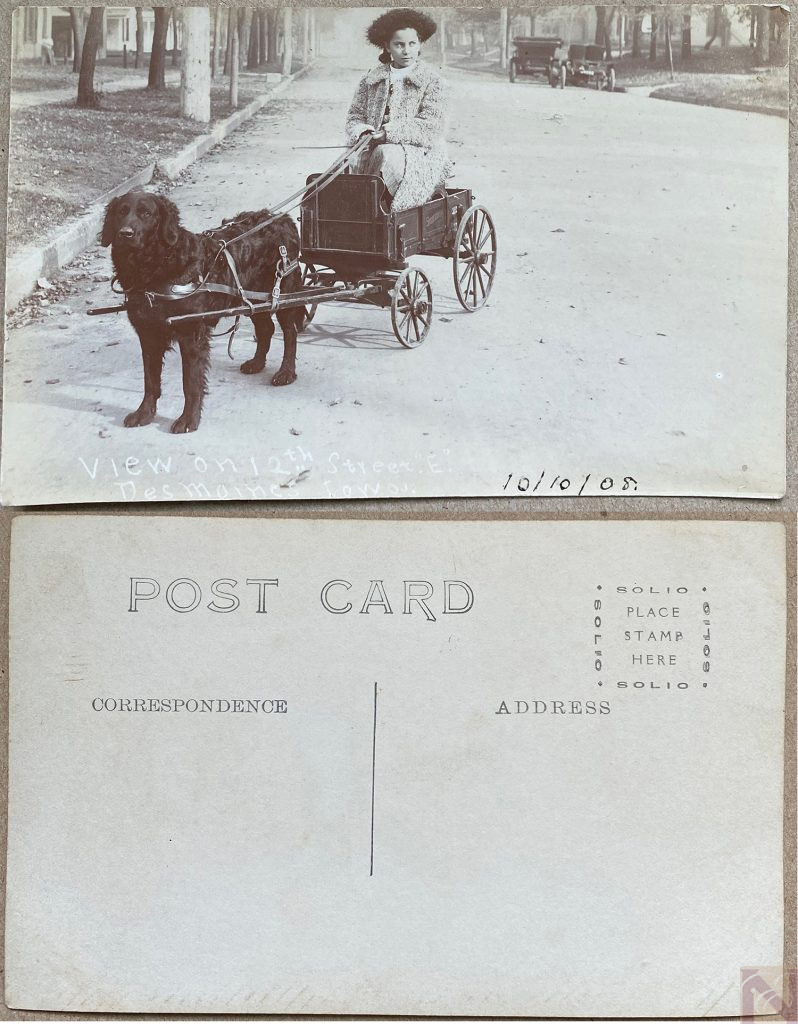
At times, the picture was not printed to fill the entire front of the post card, allowing room for the sender to include additional writing. This card is printed using the AZO printing process which was popular from 1910-1930.
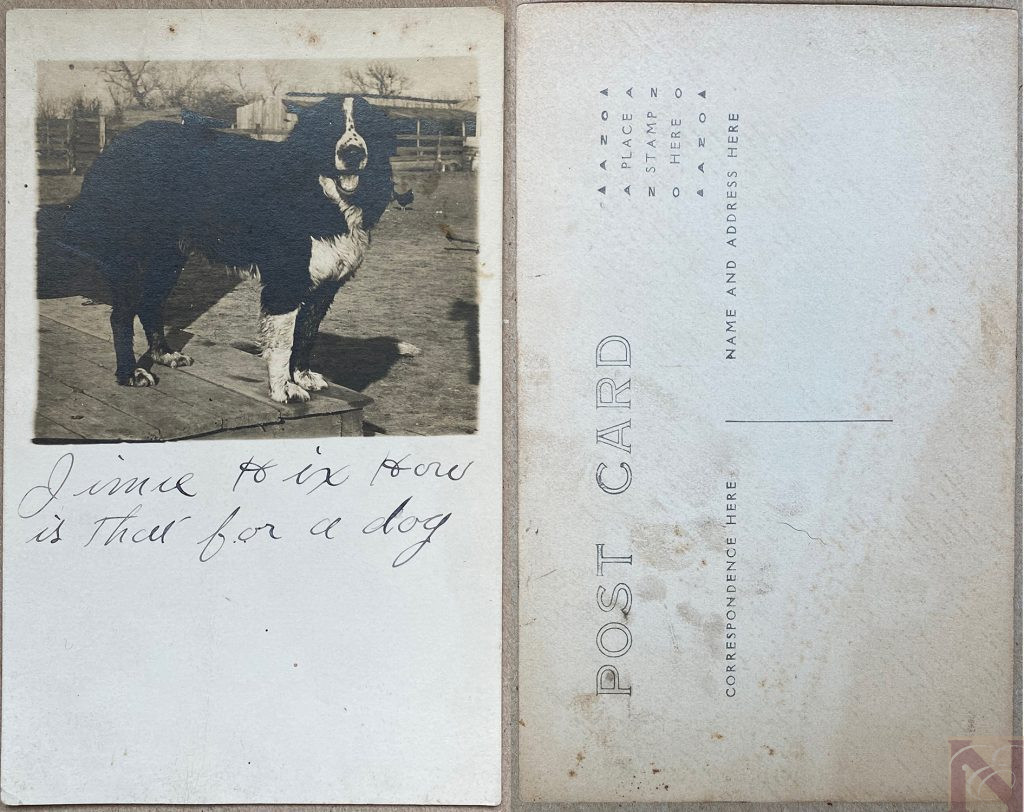
“Real photo postcards captured aspects of the world that their commercially published cousins never could. Big postcard publishers tended to play it safe, issuing sets that showed celebrated sites like town halls, historic mills, and post offices. But the photographers who walked the streets or set up temporary studios worked fast and cheap. They could take a risk on a scene that might appeal to only a few or capture a moment that would otherwise have been lost to posterity.” – Benjamin Weiss This postcard mailed in April 1908 in Germany.
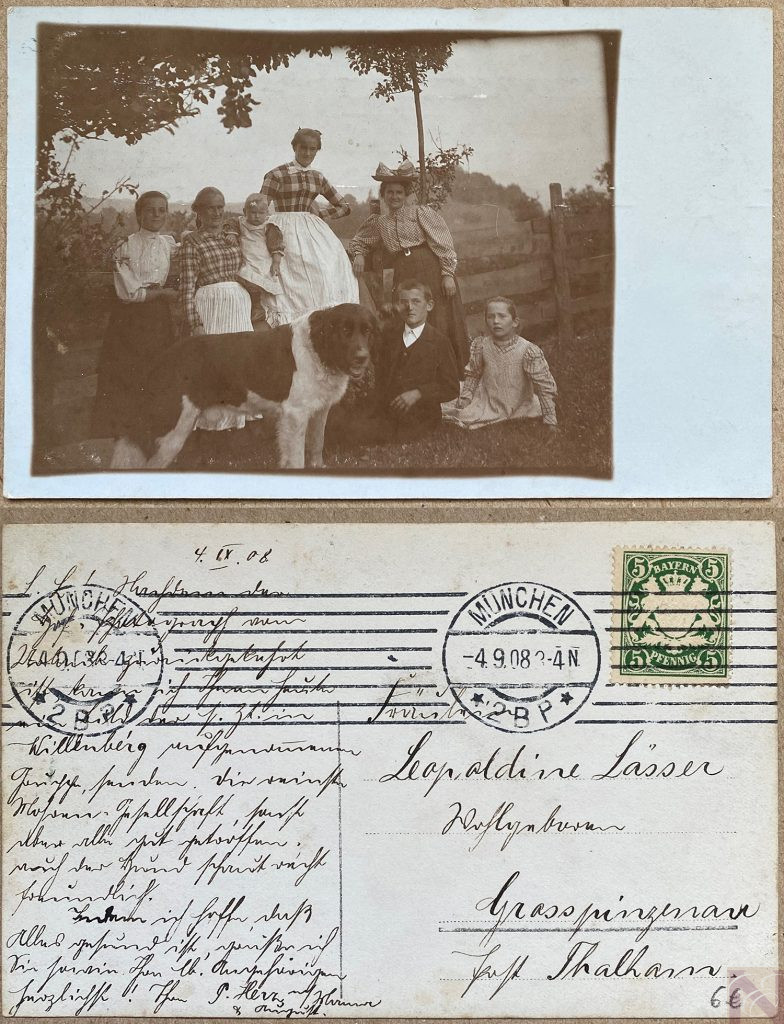
Resources:
https://www.playle.com/realphoto/
https://utrgv.libguides.com/earlyphotographs/cards
https://www.effinghamherald.net/lifestyle/echoes-of-effingham/dating-the-past-with-postcards/
Leave a Reply